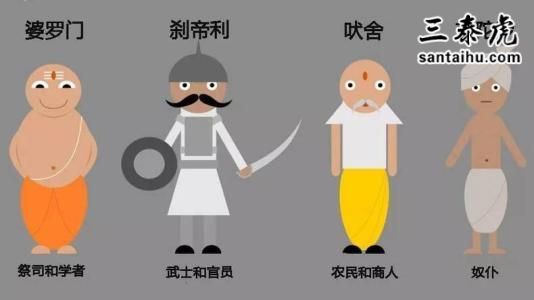In practice, how does India's caste system work in the 21st century?
实际生活中,印度的种姓制度在21世纪是如何发挥效力的?
QUORA网站读者评论:
Mayur Dattatray Sherkhane, I've witnessed caste discrimination
I would like to share One story I witnessed in 2009,
I attended counselling round during B Tech admission at one of the most prestigious colleges in Maharashtra (COEP)
3 seats were left, which belonged to ST (Scheduled Caste) quota, college couldn't find ST students till end and hence those seats converted into Open Category. Most of the ST students leave the education at primary level. Few complete high school, and very few attend graduation schools.
我想分享一个我在2009年亲眼目睹的事
我在马哈拉施特拉邦最负盛名的大学之一(COEP)的B级理工学院入学期间参加了辅导团。
剩下的3个席位属于ST(表内种姓)配额,学校直到最后都找不到合格的ST学生,因此这些席位被转换为开放类别。大多数ST的学生只有小学毕业的教育水平。很少人能完成高中学业,很少人能进入研究生院学习。
In IITs, most prestigious technical colleges in India have deficiency of faculties. Nearly 740 faculties are required to serve the educational system. Among these 740 seats, more than 70% seats belong to Scheduled Caste (SC) and Scheduled Tribes (ST). It's really difficult to find highly educated and proficient staff for teaching especially from backward castes.
If this quota is removed then I don't think most of the ST students will even be able reach under graduate level.
在印度理工学院,印度最有声望的工学院,也面临着师资的不足。学校的教育系统服务需要将近740个教员。在这740个席位中,超过70%的席位属于表内种姓(SC)和表内部落(ST)。很难找到受过高等教育和精通教学的教师,尤其是来自落后种姓的教师。
如果这个配额被取消,那么我认为大多数ST的学生都无法达到本科生水平。
One more story…
5 years back, I visited a small village named Chilawadi, Osmanabad district (Maharashtra).
I was with my family and one family friend who was local from the same village. We were visiting the village and loitering here and there. After some time, we came across the Vitthal temple and I Suddenly asked my local friend to show us the temple. He said, just go ahead. I removed my footwears and started walking in. But I noticed that, my friend was stopped just at the stairs. I waved my hand and asked to come in. His reply was heart breaking.
He replied, “ WE ARE NOT ALLOWED IN THE TEMPLE.”
Whatever the community he was belonged, that community was not allowed to enter in the temple. Surely he was from backward caste.
再讲一个故事……
5年前,我去了一个位于奥斯马纳巴德地区(马哈拉施特拉邦),名叫奇拉瓦迪的小村庄。
我和我的家人以及一个来自同一村庄的当地朋友在一起。我们在村子里四处闲逛。过了一段时间,我们来到了维特尔神庙,我心血来潮,请当地的朋友带我们去参观。他说,去吧。我脱掉脚上的鞋,走了进去。但我注意到,我的朋友在楼梯口就被拦住了。我挥了挥手,请他进来。他的回答令人心碎。
他说,我们不能进这座寺庙。
无论他属于哪个社区,这个社区都不能进入寺庙。他肯定来自落后的种姓。
译文来源:三泰虎 https://www.santaihu.com/46346.html 译者:Joyceliu
Yuganshu Sharma, works at BSES
It varies with the location and economic status of the parties involved.
Urban
In the economically elite classes, it is almost unheard/unseen of.
In the middle class setting, it's covert and shows up during matchmaking specifically.
In the poor class, caste along with region serves as identity and it doesn't get dissociated.
Rural
Here, economic condition is superficial. Caste takes paramountcy in all social relations and events.
Elite castes, they make sure they adhere to stringest possible following of the caste rules in dealing with shudras and untouchables.
Kshatriya and Vaishyas, they make sure that the poor don't get access to same resources(wells), schools or at the same rate of interest(in case of debt).
Shudras and Untouchables don't really have much choice.
The abolition of untouchability has had a major effect but it's yet to cure India of it's malaise.
这个情况因有关各方的所在地和经济状况而异。
城市
在经济精英阶层,这种事几乎是闻所未闻、见所未见的。
在中产阶级阶层,这种事是隐蔽的,会在找对象时出现。
在底层阶层中,种姓和宗教都关乎身份,不会消失。
农村
在这里,经济条件是表面的。种姓在一切社会关系和活动中都至高无上。
精英阶层,他们确保自己在对付首陀罗和贱民时尽可能严格遵守种姓制度。
刹帝利和吠舍,他们确保穷人无法获得相同的资源、学校或相同的利率(债务情况下)。
首陀罗和贱民没有太多选择。
“贱民”制度的废除产生了重大影响,但它仍未治愈印度的痼疾。


These newspaper photos are of November,2015 (Indian Express).
这些报纸照片是2015年11月(印度快报)。
此文由 三泰虎 编辑,未经允许不得转载!:首页 > 印度 » 实际生活中,印度种姓制度在21世纪是如何发挥效力的

 印度空军重新调整现代化计划,推动“印度制造”
印度空军重新调整现代化计划,推动“印度制造” 印度新冠肺炎确诊病例突破10万例,死亡病例超过3000例
印度新冠肺炎确诊病例突破10万例,死亡病例超过3000例 印度财政部长:可以通过多种形式把钱发到人们手中
印度财政部长:可以通过多种形式把钱发到人们手中 印度食品部宣布:15天内向8000万民工发放免费口粮
印度食品部宣布:15天内向8000万民工发放免费口粮 印度开展药品外交,向拉美及加勒比海国家、非洲国家伸出援助之手
印度开展药品外交,向拉美及加勒比海国家、非洲国家伸出援助之手 你认为印度现在最需要什么
你认为印度现在最需要什么 印度北方邦卡车事故造成26名民工死亡,36人受伤
印度北方邦卡车事故造成26名民工死亡,36人受伤 印度北方邦两卡车相撞,致23名民工死亡
印度北方邦两卡车相撞,致23名民工死亡